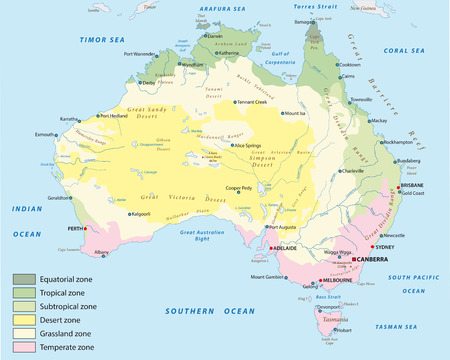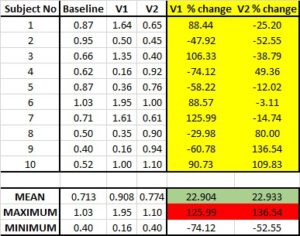A large portion of the cosmetic products sold in Australia are imported, while a smaller yet significant amount are developed in Australia using either locally sourced ingredients or ingredients developed overseas. Having access to quality products from different countries is certainly an advantage for Australian consumers, but the distinctiveness of this market may need to be included into a long term success strategy. Development and marketing of cosmetic and dermatological products should take into consideration the unique characteristics of the Australian market:
- Demography
Australia’s population is characterised by migrants from different ethnicities and skin types. Even though a vast majority of the population is of European ancestry (mostly from the United Kingdom), Australia is mostly regarded as a multicultural society.
- Local Climate and Geographic Distribution of the Population
Climatic conditions are different between the north, center and south of the country. Generally seasons are characterised by a short mild winter and a hot summer. Most of Australia’s population is concentrated in the south-east and east coast, and the south-west coast, where the climate is mostly temperate. Other populated areas are characterised by subtropical climate.
When it comes to making claims about the efficacy or likeability of cosmetic products it is important to consider that Australia differs from other countries in many ways and the results of a study conducted overseas might have been different if the study was conducted locally. The two characteristics mentioned above are critical when it comes to developing products that ought to have an effect on the skin.
Many products or ingredients sold in Australia might have undergone clinical trials and other in-vivo testing to assess their moisturising, anti-ageing, skin brightening, skin balancing effects etc. However, some common skin concerns are highly correlated with skin type and ethnicity which are typical of a country (for example skin redness and pigmentation). Moreover, the skin is an organ that is largely affected by environmental factors. If the products have been developed and tested offshore or their raw materials have been developed and tested overseas, an assumption can be made that they are going to be as effective in Australia. However, we cannot be entirely sure, given that ethnicity and environmental variability have an impact on skin.
For example:
Objective Assessments
There are a number of instruments and scientific methods used to quantitatively assess the efficacy of cosmetic and personal care products. Results of measurements and quantitative assessment in a heterogeneous population such as the Australian one may be different compared with the results in one particular ethnicity. The difference in seasons and particular climatic conditions may have an impact as well. For example results of an anti-ageing study conducted in Beijing during winter may have different results compared to a study conducted in Sydney in winter. Difference in the skin of different ethnic groups has been acknowledged in the scientific literature1 with some papers suggesting a link between ethnicity and efficacy of certain skin care products2.
Subjective Assessments
Product sensory aspects are defined as those characteristics that may contribute to the overall likeability. Product absorption, consistency and smell for example may determine whether consumers are going to continue using a particular cosmetic product. Sensory aspects may be perceived quite differently depending on climate. For example if in cold months a thick cream may be well accepted by consumers, in hot climates it may appear too ‘heavy’ to use during the day.
From a regulatory point of view, cosmetic claims that are supported by scientific research conducted overseas are completely acceptable. Yet, the success of a brand is not only due to its claims but its actual performance. Skin care products sold in Australia that aim to perform well in Australia, should preferably be tested in the local market as well.
Whether Australia is their main market, or one of the many markets for distribution, an increasing number of local and international cosmetics brands conduct clinical trials in Australia. Some companies consider this an added value as they can claim that their products’ efficacy has been tested on a local population in local environmental conditions. Trialling products in Australia allows the company to identify which products are most suited for this market and which are worth investing marketing efforts.
Some cosmetic companies rely on the results of trials made on certain raw ingredients for developing their products, while some companies use results of trials conducted on the finished products in their marketing campaigns. These companies should investigate if trials have been executed according to appropriate scientific standards, but also find out where the trials were conducted and consider whether additional testing should to be carried out.
Ongoing research on skin care products and ethnic differences in skin biology may allow cosmetic chemists to develop targeted, subject-specific skin care regimens in the future. In the meantime, cosmetic studies should ideally involve participants that share similar characteristics with the end user of the product (i.e. demographically and environmentally matched). Results of clinical trials and consumer studies conducted in the target market might be more reliable to measure a product efficacy.
References
—————————-
- Vashi NA, Buainain De Castro Maymone M, Kundu RV. Aging Differences in Ethnic Skin. The Journal of Clinical and Aesthetic Dermatology. 2016;9(1):31-38.
- Wan DC, Wong VW, Longaker MT, Yang GP, Wei F-C. Moisturizing Different Racial Skin Types. The Journal of Clinical and Aesthetic Dermatology. 2014;7(6):25-32.




